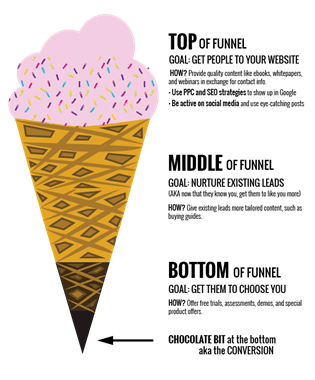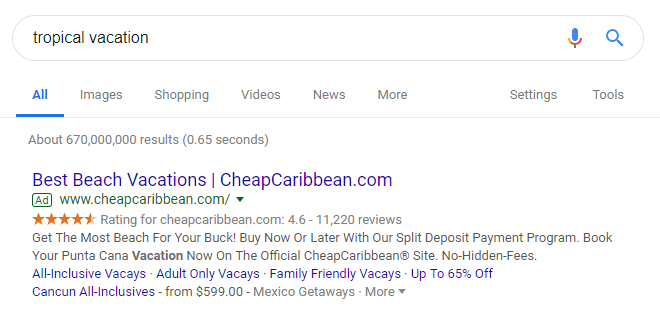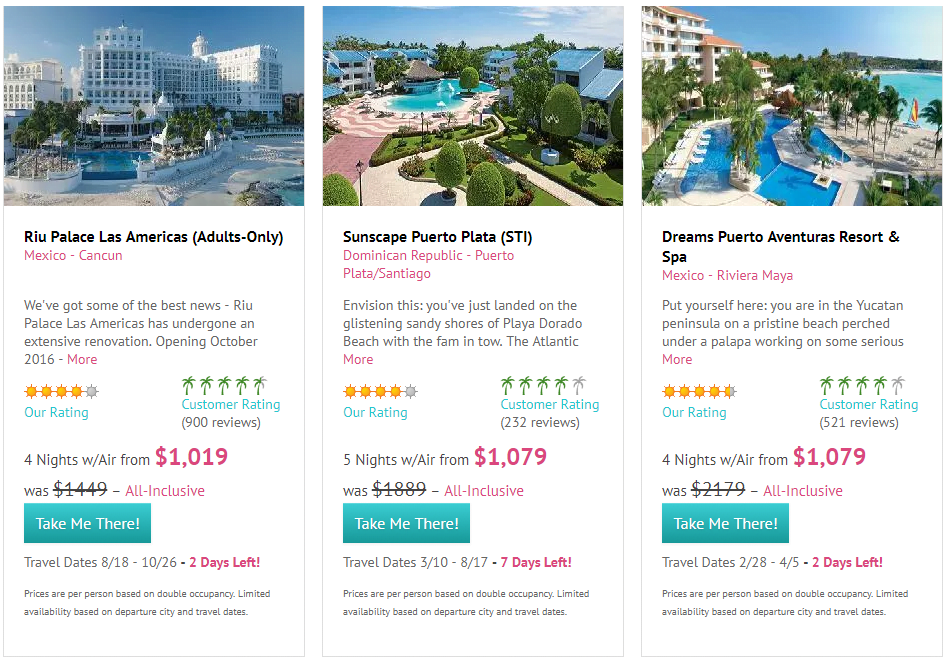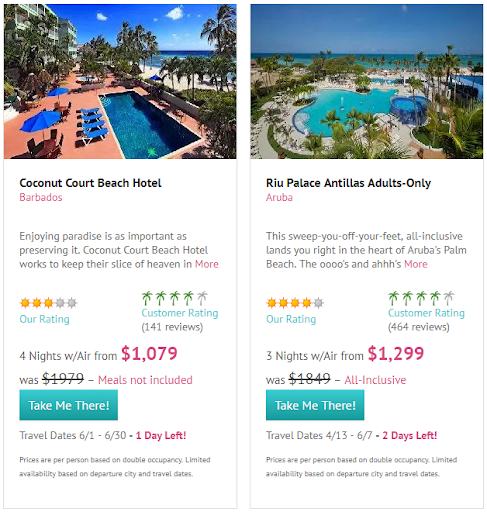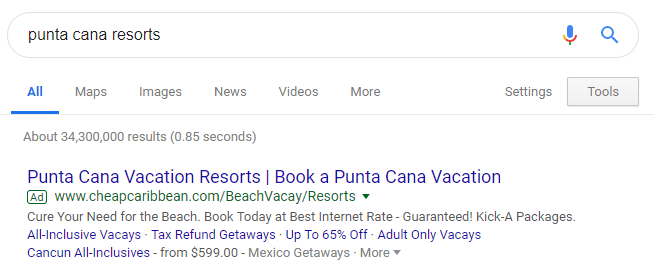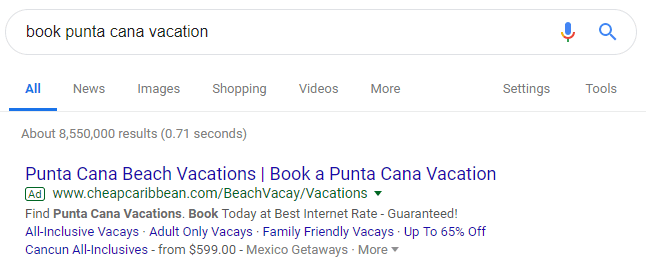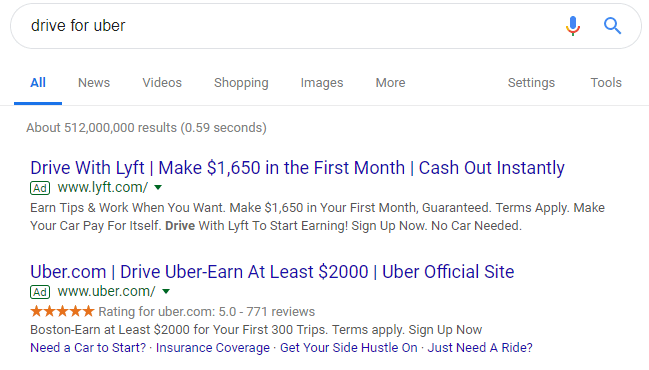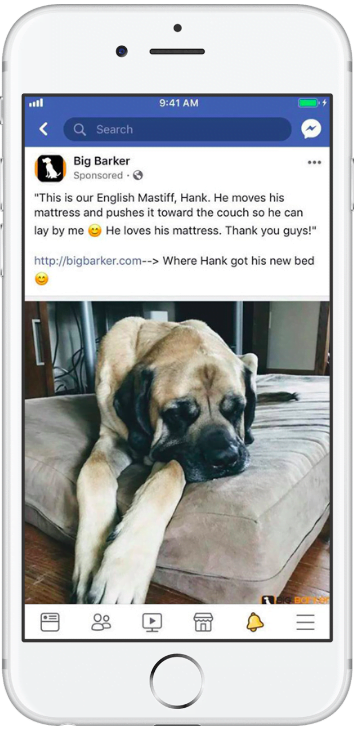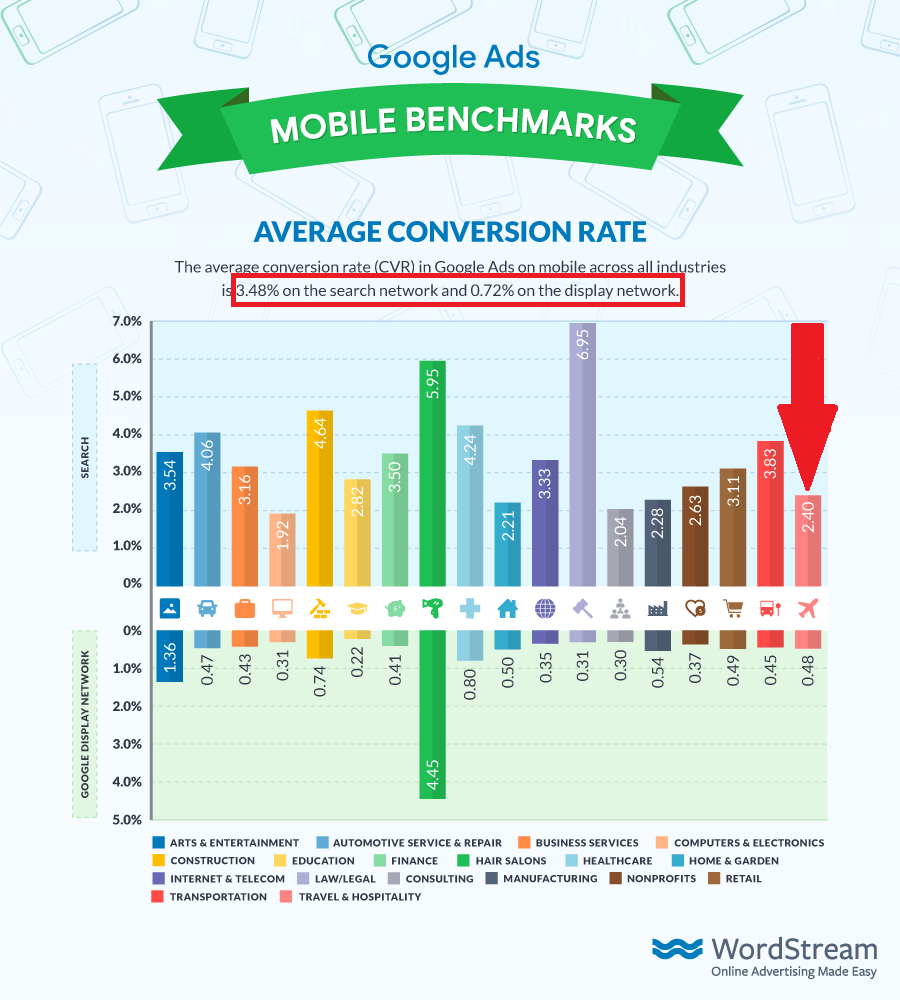
This post was co-written by Gordon Donnelly and Conor Bond.
Here at WordStream, we’re committed to helping businesses like yours launch effective and profitable campaigns across search and social. Towards that end, we took it upon ourselves to identify five online advertising campaigns (two on Google, three on Facebook) that struck marketing gold.
Each of the following campaigns is a high-performer in its own right. From Facebook lead ads, to Custom Audience creation, to search network omnipresence, to account structure refinement—these campaigns leverage strategies you’re probably familiar with. They just do so in an extraordinarily effective way.
Let’s dive in!
1. New Jersey Devils score with Facebook lead ads
If you’re familiar with the New Jersey Devils franchise, or with hockey in general, you may be aware that the Devils were a National Hockey League powerhouse in the early 2000s. You might also be aware that the last few iterations of the team have been, well, a mixed bag. Prior to last season, the Devils had missed the playoffs five years running; any playoff drought that long is going to do a number on season ticket sales. But the Devils did make the playoffs this past year. And though they didn’t make it out of the first round, the team created quite a buzz in New Jersey.
The Devils decided to try to capitalize on their success by leveraging Facebook ads in the 2018 offseason to increase season ticket sales. Specifically, they leveraged Facebook lead ads.
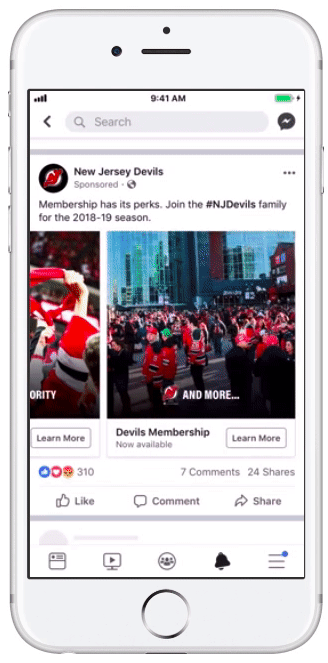
The lead ad is a streamlined, in-app ad format that allows prospects to submit their contact information without ever leaving Facebook. Lead ads convert to leads at a 2.07% higher rate than landing pages. The Devils didn’t just use them all willy-nilly, though. The campaign was executed in three steps:
- The Devils created a Facebook event for a team-hosted open house where prospects could learn more about season ticket membership. They then leveraged Custom Audiences to deliver that ad to previous subscribers.
- They created two variations of lead ads—one with a ticket sign up CTA (seen above), and one advertising the open house—and again used custom audiences to deliver them to a high-intent pool of prospects.
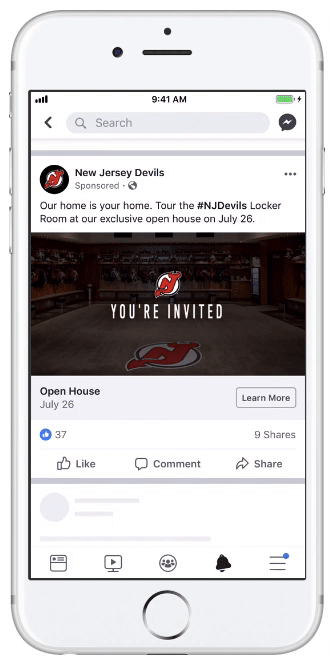
3. They remarketed to prospects from the prior two phases who hadn’t yet filled out a form.
The Devils ran this Facebook campaign from May 31 to August 7 of 2018, generating 12X return on ad spend, 32% more leads than a past email campaign, and over 700 total leads. Now if only they could win some hockey games!
2. CheapCaribbean.com meets prospects at every moment
The travel and hospitality industry is known for its long sales cycles. Although advertisers in this industry enjoy high CTRs and low CPCs—there’s a negative correlation at work here—travel and hospitality ads convert at below-average rates across desktop and mobile.
Why? Because flights and hotel rooms are expensive. Compared to online shoppers hunting for things like clothes and home decor, prospective travelers do extensive research before taking out their credit cards.
In other words: They conduct a lot of Google searches.
An essential component of good search marketing is meeting your prospects at key moments as they work their way down the sales funnel. The more precisely you can match their intent at each moment, the more relevant your Search ads will be—and the more success you’ll enjoy.
Consider what happens when you don’t match a user’s intent. Let’s say someone starts her vacation planning journey with a search for “northern european destinations.” Clearly, she’s in the early stages of the sales funnel—merely searching for ideas at this point.
If a Swedish resort were bidding on this keyword with an ad for its luxury suites, the chances of the prospect clicking through to their website are slim. Over time, as more prospective travelers beginning their research ignore this Swedish resort’s irrelevant ads, the resort will suffer low CTRs, low Quality Scores, and low Ad Ranks.
Now, the marketing team over at CheapCaribbean.com—a company that sells tropical vacation packages—has a strong grasp on the practice of meeting prospective customers at each moment in the sales funnel.
When someone searches “tropical vacation,” she’s obviously in the early stages—not ready to convert. So, what does CheapCaribbean.com do? They serve her a high-level ad that brings her to a general landing page, showcasing all the different tropical vacation packages they offer.
Intrigued by some of the destinations she saw on that landing page, the prospect makes her next search “caribbean vacation.” Sure enough, CheapCaribbean.com is there, serving a highly relevant ad. The landing page is more focused, showing only Caribbean packages. Plus, the text ad itself matches the prospect’s higher level of intent by serving sitelinks to specific pages.
Being the savvy marketers that they are, the CheapCaribbean.com team recognizes the importance of staying on top of prospective travelers’ minds as they weigh their options. So, they target website visitors with enticing Display ads as they read articles on travel blogs:
Alright—now the prospect is pretty sure she’s interested in going to the Caribbean. The destination that stood out the most from that last landing page was Punta Cana, located in the Dominican Republic. So, she Google searches “about punta cana.”
Although she’s getting more specific with her desired destination, she’s still not at a conversion stage. CheapCaribbean.com nails it yet again, serving a relevant, intent-matching ad and an organic result.
Blown away by what she’s learned about Punta Cana, our prospect is pretty close to converting. To learn more about her options for places to stay in Punta Cana, she searches “punta cana resorts.” Who’s at the top of the paid results with the perfect ad? CheapCaribbean.com.
And when she’s finally ready to book a place, CheapCaribbean.com is there to make the sale.
In a nutshell, here’s what makes CheapCaribbean.com great at online advertising:
- Meets the prospect at every moment during the purchase journey.
- Tailors ad copy and ad extensions to match the prospect’s intent.
- Earns the prospect’s trust by consistently offering her relevant, useful information.
- Uses Display remarketing to serve enticing, contextually relevant banner ads.
Related: The 5 Best Marketing Campaigns We’ve Ever Seen (& How to DIY)
3. CordaRoy’s gets 9X ROAS using customer lookalikes
If you’re like me, you’ve crashed on a few couches in your day. There’s nothing quite worse than waking up with your neck wedged against a stiff couch arm, or having the air mattress pop in the middle of the night, or, perhaps worst of all, being relegated to the floor. CordaRoy has an extremely unique, extremely cozy solution to that problem, and they decided to showcase it using Facebook video ads.
The idea here is that by showing how the Bean Bag Bed works in full effect, CordaRoy could generate more sales than they could in other channels. The Search network takes the cake when it comes to reaching high-intent prospects at their most vulnerable, sure. But what better way to truly qualify prospects than to show them exactly how your product works and how they could use it if they were to buy it? And what better way to reach a vast amount of new prospects than by leveraging Facebook’s Reach and Brand Awareness campaigns and CPM (Cost per thousand impressions) bidding? Spoilers: There’s no better way.
To reach prospects that were most likely to buy, CordaRoy leveraged one of my personal favorite strategies, customer lookalike audiences. They also used a sophisticated remarketing strategy based on site traffic.
All said, for their troubles, CordaRoy experienced a 44X increase in revenue, 9X return on ad spend, 39% lower cost per action on CordaRoy’s website, and 12,012 total purchases from this Facebook campaign.
4. Lyft bids on Uber’s brand name
In October 2017, Uber captured 72% of the US ride-share market and Lyft captured 25%. As of October 2018, Uber captures 69% and Lyft captures 28%. Plus, Lyft is growing revenue twice as fast as Uber is.
Evidently, although Uber remains the dominant ride-share service in the US, Lyft is making substantial competitive strides. How are they doing it?
With fantastic search marketing, for one thing.
Just so we’re on the same page in terms of what’s going on here: Lyft bids on Uber’s brand name as a keyword. This is a search marketing tactic known as competitor targeting. Basically, you bid on rival businesses’ brand names in hopes of turning navigational search queries into impressions (that yield clicks and conversions, ideally).
There are three key benefits to competitor targeting:
- Due to low competition, it’s a relatively inexpensive tactic.
- It allows you to build brand awareness.
- You know you’re driving highly qualified/relevant impressions.
Lyft is essentially letting people know that they exist and offer an alternative to Uber’s service. Plus, because the people searching “drive for uber” are clearly interested in making money as a driver, Lyft knows they’re only getting impressions (and clicks) from relevant people.
There are a couple downsides to competitor targeting, too, of course:
- It could start a bidding war between you and your competitor.
- Your CTRs may not be as high as you’d like.
When you bid on your competitor’s brand name, you run the risk of provoking your competitor into bidding on your brand name. It’s sort of like the prisoner’s dilemma. The best outcome, probably, is for each business to leave the other’s brand name alone. But, once one business begins running a competitor targeting campaign, the other has an incentive to do the same.
Interestingly enough, this doesn’t seem to be the case with Uber and Lyft:
It’s likely that Uber’s continued advantage in the US ride-share market means they don’t feel the need to bid on Lyft’s brand name. But it’s a unique market (read: a duopoly).
The other downside to competitor targeting is the likelihood of below-average CTRs. Although it certainly yields relevant impressions, you have to remember that users are searching for your competitor for a reason. Don’t expect them to click on your ad at a particularly high rate.
Then again, in most cases, the concern with a low CTR is that you’ll suffer a decline in Ad Rank and fall out of the top sponsored spots. But when you’re one of only a few businesses bidding on a given brand name, that’s not something you have to worry too much about.
In a nutshell, here’s what makes Lyft great at online advertising:
- Targets users who demonstrate interest in either getting a ride or becoming a driver
- Builds the brand awareness that’s typically built through Display and YouTube
5. Big Barker tightens its account structure for amplified results
We already talked about bean bag beds. Let’s get to the beds that really matter: dog beds. Big Barker is a unique online bed retailer that was faced with a less than unique problem: a cumbersome Facebook ad account structure. They were using 33 different ad sets within one campaign—a number that made collecting and implementing meaningful data nearly impossible. Their creative strategy was great; they just didn’t maintain a streamlined enough structure to really capitalize on it.
Enter ad set consolidation! We here at WordStream are huge proponents of keeping one’s Facebook ads (and Google Ads, for that matter) account structure as tight as possible. When our managed services team audits Facebook accounts, a cumbersome and overly complex structure is one of the first things they’re looking for. Keeping your data organized is absolutely pivotal if you want to automate processes and glean insights that are going to help you increase performance.
Big Barker did just that. By cutting down their ad set number from 33 to 6, and organizing their ad sets based on unique targeting strategies and prospect profiles, they were able to achieve a 30% increase in add-to-carts, and a 26% lower cost per add-to-cart. That is some serious coin saved!

